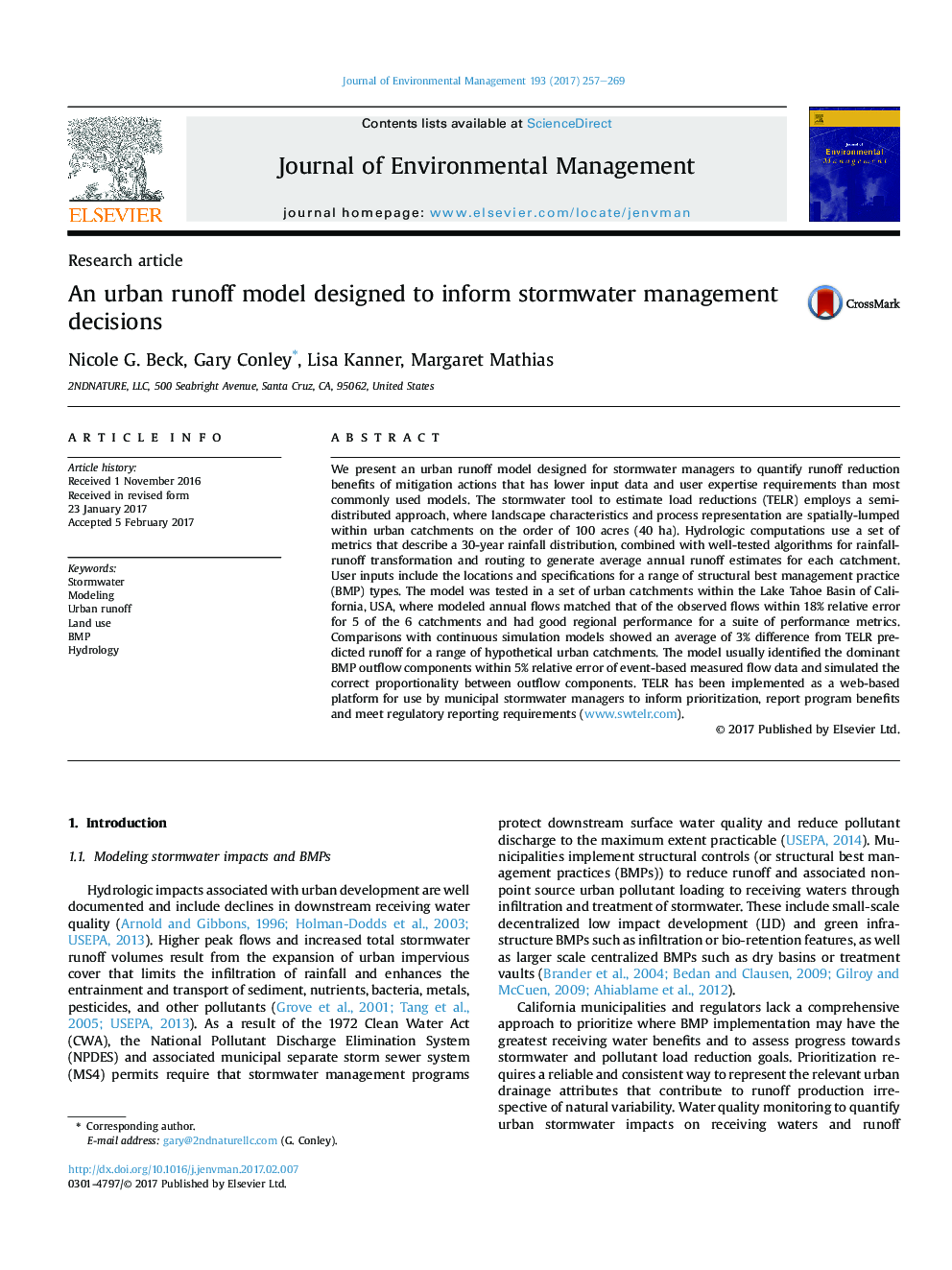| Article ID | Journal | Published Year | Pages | File Type |
|---|---|---|---|---|
| 5116829 | Journal of Environmental Management | 2017 | 13 Pages |
Abstract
We present an urban runoff model designed for stormwater managers to quantify runoff reduction benefits of mitigation actions that has lower input data and user expertise requirements than most commonly used models. The stormwater tool to estimate load reductions (TELR) employs a semi-distributed approach, where landscape characteristics and process representation are spatially-lumped within urban catchments on the order of 100 acres (40Â ha). Hydrologic computations use a set of metrics that describe a 30-year rainfall distribution, combined with well-tested algorithms for rainfall-runoff transformation and routing to generate average annual runoff estimates for each catchment. User inputs include the locations and specifications for a range of structural best management practice (BMP) types. The model was tested in a set of urban catchments within the Lake Tahoe Basin of California, USA, where modeled annual flows matched that of the observed flows within 18% relative error for 5 of the 6 catchments and had good regional performance for a suite of performance metrics. Comparisons with continuous simulation models showed an average of 3% difference from TELR predicted runoff for a range of hypothetical urban catchments. The model usually identified the dominant BMP outflow components within 5% relative error of event-based measured flow data and simulated the correct proportionality between outflow components. TELR has been implemented as a web-based platform for use by municipal stormwater managers to inform prioritization, report program benefits and meet regulatory reporting requirements (www.swtelr.com).
Related Topics
Physical Sciences and Engineering
Energy
Renewable Energy, Sustainability and the Environment
Authors
Nicole G. Beck, Gary Conley, Lisa Kanner, Margaret Mathias,
